World’s top sports people all have an ‘Aussie’ on their back
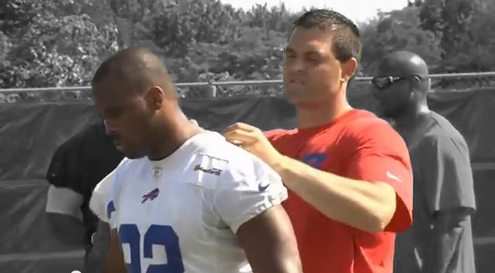 IT IS hard to overstate the impact that an Australian-developed athletic GPS tracking and monitoring system has had on sport around the world.
IT IS hard to overstate the impact that an Australian-developed athletic GPS tracking and monitoring system has had on sport around the world.
The cream of the world’s athletes – across sports as diverse as American football, rugby, Australian football, hockey, baseball, tennis, mountain biking and snow boarding – have become used to the small Catapult Sports monitoring system that tucks neatly between their shoulder blades as they train and perform.
Now with the help of Australia’s science research agency, CSIRO, Catapult Sports has taken its systems to a whole new level.
Coaches of elite athletes have been hindered in the monitoring of vital metrics of their rising stars, as reliance on GPS systems to gather information on their power and speed were unreliable in poor signal areas such as indoor stadiums or arenas.
However, the program Tracking Elite Athletes, which uses revolutionary ClearSky Technology, changes all that by fulfilling the needs of coaches and broadcast media for accurate athlete analytics. It is the result of a joint project between CSIRO and Catapult Sports.
Their achievements were recognised by the engineering fraternity, when they were awarded the highly prestigious President’s Award by Engineers Australia, Sydney Division at the 2013 Engineering Excellence Awards Sydney in September last year.
CSIRO research team leader, Mark Hadley said the technology overcomes limitations of GPS systems by combining the indoor tracking components of CSIRO’s Wireless Ad-hoc System for Positioning (WASP) technology with Catapult Sport’s advanced inertial sensors and algorithms, in a sleek exterior designed for use in professional sport.
The current solution is being used to evaluate performances of athletes in the Australian Football League (AFL).
“The technology that this partnership has developed is 10 times more accurate than GPS systems, and in sports where the results are closer and more technical, these results are much more important,” Dr Hadley said.
He said players’ performances can be quantified and improved by making team training more specific based on game demands, combining the work of the coaching staff with that of the fitness staff, and by comparing the performance levels of players with other players, sessions, or predetermined physical goals.
“Seeing the fruits of your research is fantastic, for 95 percent of research projects never go anywhere, so it is great to be a part of a successful one,” Dr Hadley said. “The win provides inspiration to keep going and do better; it is great to get that recognition amongst our peers.”
In a way, the award made Dr Hadley’s team feel like the winning athletes they assist.
"The win is a fantastic honour and part of the excitement behind winning is having the research and the project recognised,” he said. The project was also awarded an Excellence Award in the category of Software and Embedded Systems.
Catapult was founded in 2006 as a part of Federal Government research to develop technology for use in helping to prepare athletes for Olympic competition. The founders of Catapult – Igor Van de Griendt and Shaun Holthouse – worked closely with the Australian Institute of Sport to invent athlete tracking devices.
These devices contain GPS sensors, as well as 10 other inertial and physiological sensors, including accelerometers, gyroscopes, magnetometers and heart rate sensors. The technology found its legs with field sports such as soccer, field hockey and rugby sevens.
The technology was patented and as part of the agreement with the government, Catapult remained a part of the Australian Institute of Sport for a period of time. Once the exclusive time period elapsed, Catapult began working with professional sport around the world.
Its initial clients were largely based in Australia, and the company adopted a client-driven focus in developing the technology and application of the data. Catapult worked closely with Australian football, rugby, basketball, soccer, skiing, swimming and more.
Initially, the focus of the technology was on establishing the exact demands of match competition – something that previously was impossible. Catapult’s critical differentiator between athlete tracking technology and other tracking devices, such as heart rate monitors, is that athlete tracking allows measurement of the external demand and intensity of the movement of the athlete.
Other tracking technologies have focused on the internal response of the athlete, which is equally important, but athlete tracking devices allow the measurement of the workload that elicited that response.
The technology has been applied beyond sport in the US, where Catapult has its base in Ohio, with military training applications and some moves into workplaces to enhance productivity.
ends

 How to resolve AdBlock issue?
How to resolve AdBlock issue? 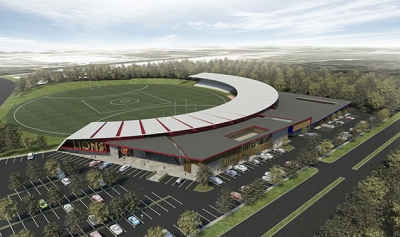 BRISBANE Lions' new elite training and administration facility (ETAF) is being developed as part of a wider regional sport and community recreation precinct at Springfield Central, in the neighbouring Queensland City of Ipswich.
BRISBANE Lions' new elite training and administration facility (ETAF) is being developed as part of a wider regional sport and community recreation precinct at Springfield Central, in the neighbouring Queensland City of Ipswich.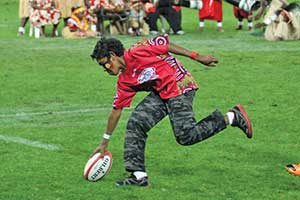 WHAT may have been missed in much of the sporting coverage of the second annual rugby union Indigenous Round fixture on Saturday was that it marked the launch of support by mining giant, Rio Tinto, for Queensland Rugby's Future Indigenous Leaders program.
WHAT may have been missed in much of the sporting coverage of the second annual rugby union Indigenous Round fixture on Saturday was that it marked the launch of support by mining giant, Rio Tinto, for Queensland Rugby's Future Indigenous Leaders program. 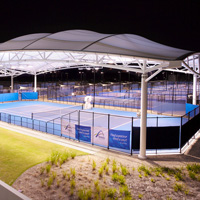 BRISBANE, FEBRUARY 2, 2012 - The just completed Brisbane International tennis tournament has won the backing of the Queensland Government, through its Events Queensland arm, for a further four years.
BRISBANE, FEBRUARY 2, 2012 - The just completed Brisbane International tennis tournament has won the backing of the Queensland Government, through its Events Queensland arm, for a further four years. Ipswich business loves the Coats Hire Ipswich 300 V8 Supercar race weekend, which starts today (August 19, 2013).
Ipswich business loves the Coats Hire Ipswich 300 V8 Supercar race weekend, which starts today (August 19, 2013).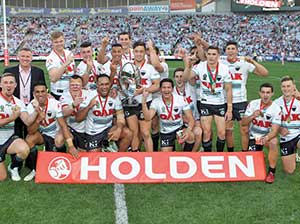 PENRITH Panthers has taken the number one spot, with a brand value of $46.2 million in the 2013 Top 20 Most Valuable Australian Sports Brands research conducted by Brand Finance. Surprisingly, even though it had the top value, Penrith Panthers only had a brand rating of AA- which actually made it one of the weaker rating brands in the Top 20.
PENRITH Panthers has taken the number one spot, with a brand value of $46.2 million in the 2013 Top 20 Most Valuable Australian Sports Brands research conducted by Brand Finance. Surprisingly, even though it had the top value, Penrith Panthers only had a brand rating of AA- which actually made it one of the weaker rating brands in the Top 20.